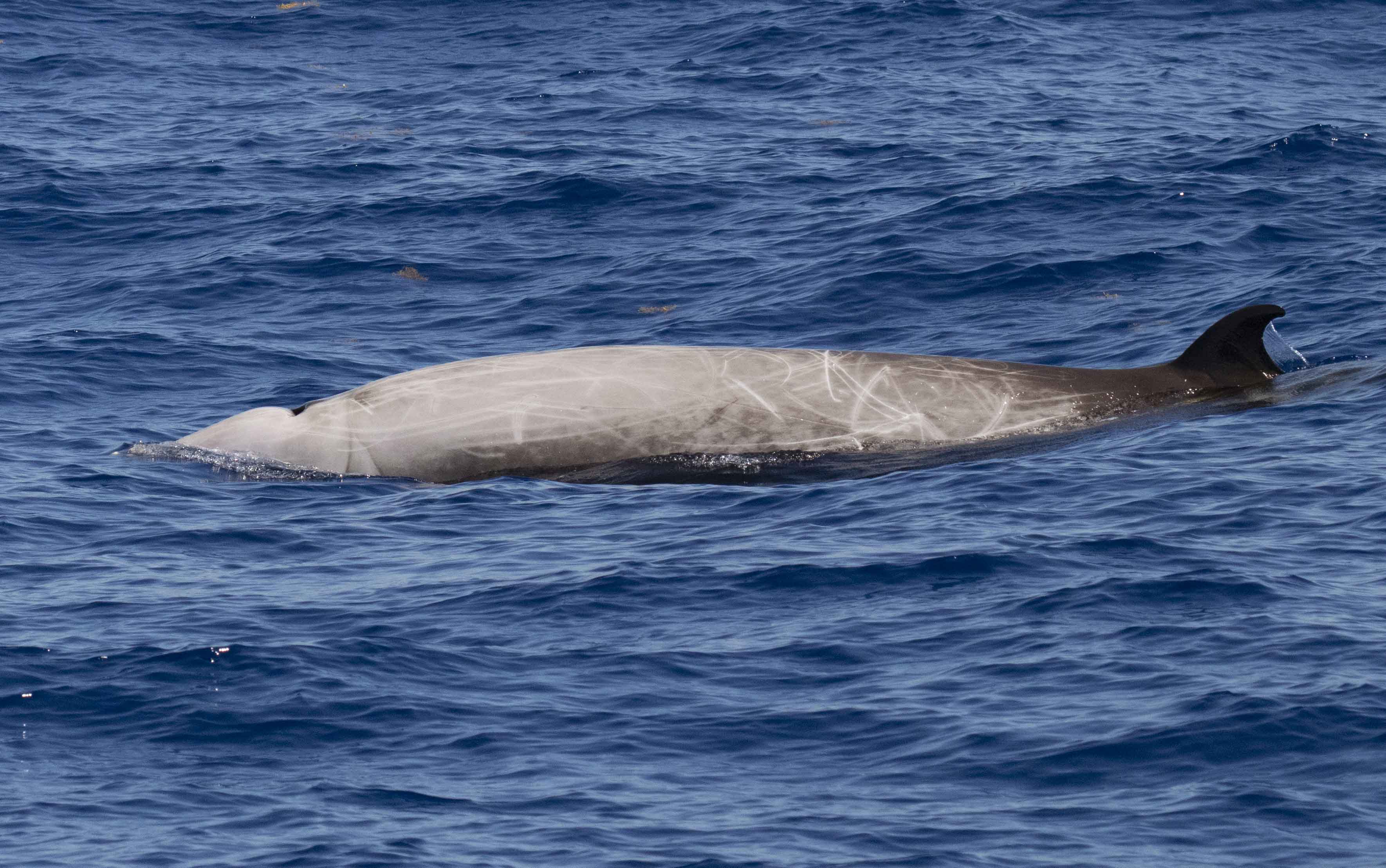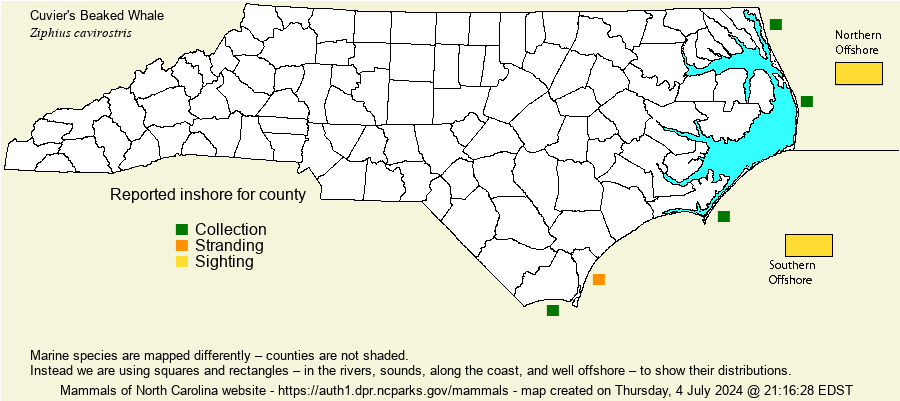|
| Distribution |
In NC, presumed to occur all along the coastline and offshore. Strandings recorded from five of the eight coastal counties. Seldom or never seen (alive) from shore, but with numerous sightings in the vicinity of the Continental Slope.
Occurs in oceans worldwide. |
| Abundance |
Uncommon to locally fairly common. Frequently seen in the vicinity of "The Point" ESE of Oregon Inlet. It is, by far, the most often seen of the beaked whales (family Ziphiidae) in the state, though this might be due to its much larger size and more easily identifiable marks than for the Mesoplodon species. Despite the fact that sightings off the coast are not rare, the Smithsonian National Museum of Natural History mammal collections (2021) lists only 5 stranding records for NC. |
| Seasonal Occurrence |
As of 1995, there had been four strandings -- April (2), July, and December. The NMNH database shows most strandings between April and July, with singles in October and December. These data suggest that it is more numerous off our coast in the warmer months, as there are no stranding records from January through March. |
| Habitat |
Deeper offshore ocean, apprently quite scarce over the Continental Shelf. |
| Behavior |
This large beaked whale occurs in small groups, typically no more than seven to ten individuals in a pod. References consider the species to be wary of boats. |
| Comments |
Males can be quite pale on the head, and older males are rather whitish-headed, as well as frequently scarred. Unlike other "beaked whales", numbers of greater than 10 individuals can be seen in NC waters on some pelagic trips. In fact, the species might be more easily seen on boat trips off NC than off any other Eastern state. |
| Origin |
Native |
| NC List |
Official |
 State Rank State Rank |
S3S4M |
| State Status |
|
 Global Rank Global Rank |
G4 |
| Federal Status |
|
| subspecies |
|
| other_comName |
Goose-beak Whale |
| synonym |
|



